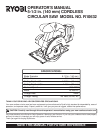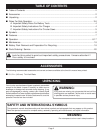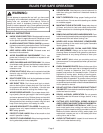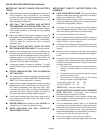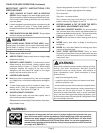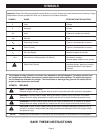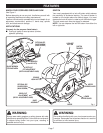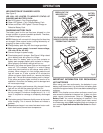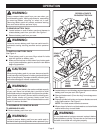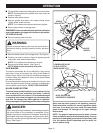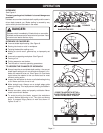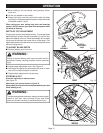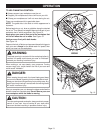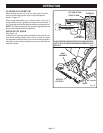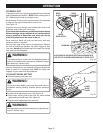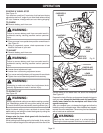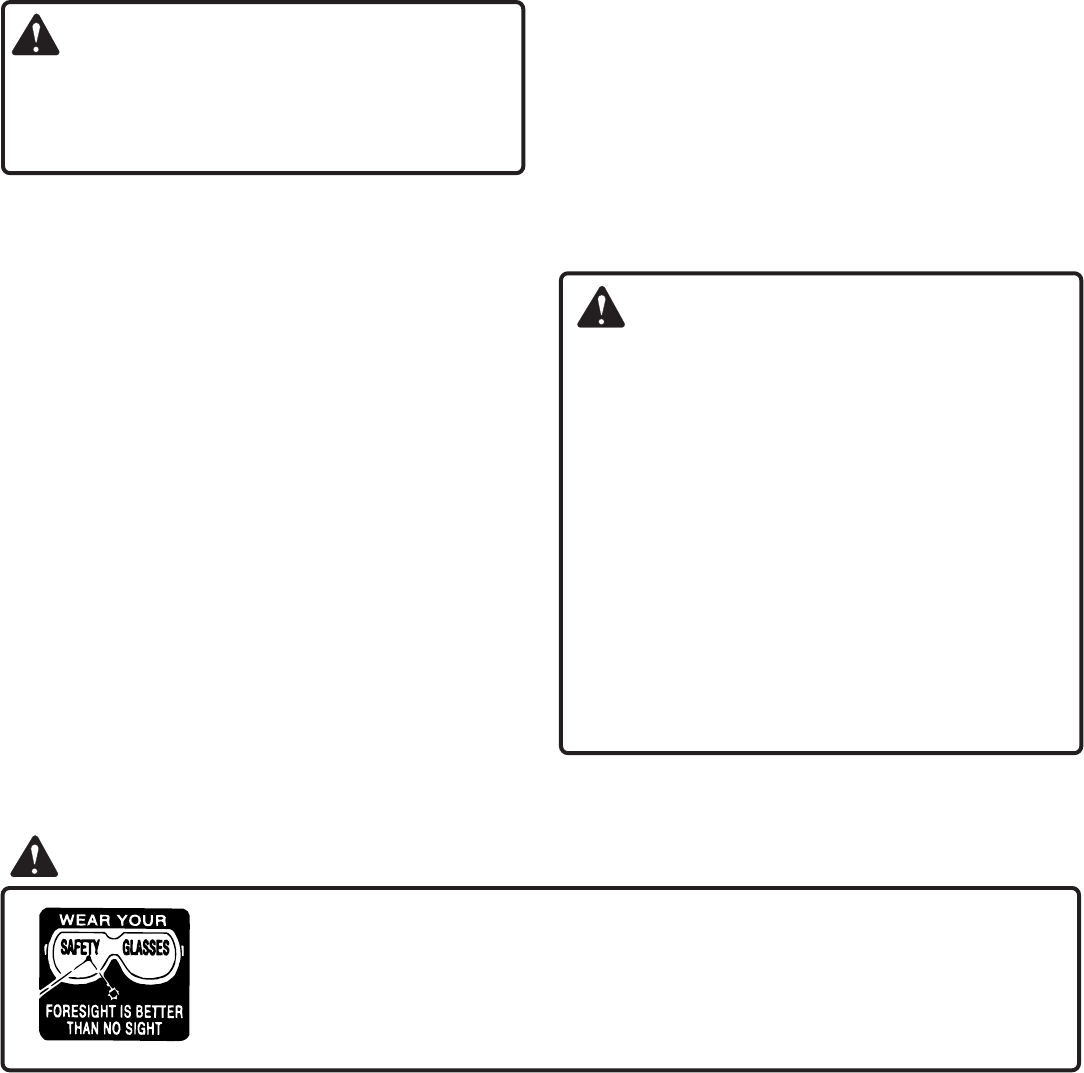
Page 5
RULES FOR SAFE OPERATION (Continued)
IMPORTANT SAFETY INSTRUCTIONS FOR
CIRCULAR SAWS
■ KEEP GUARDS IN PLACE AND IN WORKING
ORDER. Never wedge or tie lower blade guard open.
Check operation of lower blade guard before each use.
Do not use if lower blade guard does not close briskly
over saw blade.
■ If saw is dropped, lower blade guard or bumper may be
bent, restricting full return. If lower blade guard or
bumper becomes bent or damaged, replace them before
reuse.
■ KEEP BLADES CLEAN AND SHARP. Sharp blades
minimize stalling and kickback.
DANGER:
KEEP HANDS AWAY FROM CUTTING AREA. Keep
hands away from blade. Do not reach underneath work
while blade is rotating. Do not attempt to remove cut
material when blade is moving.
■ Blades coast after turn off.
■ USE RIP FENCE. Always use a fence or straight edge
guide when ripping.
■ SUPPORT LARGE PANELS. To minimize the risk of
blade pinching and kickback, always support large
panels as shown in Figure 11, Page 12. When cutting
operation requires the resting of the saw on the
workpiece, the saw should be rested on the larger
portion and the smaller piece cut off.
■ LOWER BLADE GUARD.
■ Make sure cord is located so that it will not be stepped
on, tripped over, or otherwise subjected to damage or
stress.
■ If lower blade guard must be raised to make a cut,
always raise it with the retracting handle to avoid
serious injury.
See Figure 20, Page 16.
■ GUARD AGAINST KICKBACK.
Kickback occurs when the saw stalls rapidly and is
driven back towards the operator.
Release switch immediately if blade binds or saw stalls.
Keep blades sharp.
Support large panels as shown in Figure 11, Page 12.
Use fence or straight edge guide when ripping.
Don't force tool.
Stay alert – exercise caution.
Don't remove saw from work during a cut while the
blade is moving.
See Pages 13 and 14.
■ BEFORE MAKING A CUT, BE SURE THE DEPTH
AND BEVEL ADJUSTMENTS ARE TIGHT.
■ USE ONLY CORRECT BLADES. Do not use blades
with incorrect size holes. Never use blade washers or
bolts that are defective or incorrect. The maximum blade
capacity of your saw is 5-1/2 inches (140 mm).
■ NEVER touch the blade or other moving parts during
use.
■ NEVER start a saw when its blade is touching the
workpiece.
■ NEVER lay a tool down before its moving parts have
come to a complete stop.
■ SAVE THESE INSTRUCTIONS. Refer to them
frequently and use them to instruct others who may use
this tool. If you loan someone this tool, loan them these
instructions also.
WARNING:
Some dust created by power sanding, sawing, grinding,
drilling, and other construction activities contains
chemicals known to cause cancer, birth defects or
other reproductive harm. Some examples of these
chemicals are:
• lead from lead-based paints,
• crystalline silica from bricks and cement and other
masonry products, and
• arsenic and chromium from chemically-treated lumber.
Your risk from these exposures varies, depending on
how often you do this type of work. To reduce your
exposure to these chemicals: work in a well ventilated
area, and work with approved safety equipment, such
as those dust masks that are specially designed to filter
out microscopic particles.
The operation of any power tool can result in foreign objects being thrown into your
eyes, which can result in severe eye damage. Before beginning power tool operation,
always wear safety goggles or safety glasses with side shields and a full face shield
when needed. We recommend Wide Vision Safety Mask for use over eyeglasses or
standard safety glasses with side shields. Always use eye protection which is marked
to comply with ANSI Z871.1.
WARNING:



